
The Lynx effect: Marketers need to help business managers focus on the long term.
Yes, the world is experiencing rapid change and it’s accelerating. However with the average tenure of management in companies constantly getting shorter, retained knowledge is being lost and long term plans are often abandoned before they have a chance to deliver returns. Short termism is rife, sales managers will always tend towards a quick fix to get orders in this month, and financial controllers will naturally be looking for new ways to reduce spending.
Yet the bottom line is it's the businesses that invest year after year in building brands that create the most wealth. The chart below compares the S&P 500 index performance, the blue line, with businesses that own stronger brands, the green line. It proves the businesses that invest in brand building ultimately generate more wealth for shareholders.
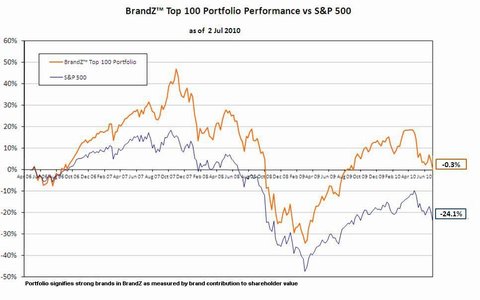
Leading brands outperform the sharemarket
A great example of how building a brand over time makes more money is to look at the work BBH in London did for Unilever. The creative leap of saying a deodorant could make a man more attractive changed the dynamics of the market category. The ad agency took an also ran product to a profit powerhouse over 20 years with the one consistent creative idea; “The Lynx effect”.

Founder of BBH Sir John Heggarty says “All we did [back in 1995] was change the thinking. It’s more than a fragrance – anyone can make a fragrance – it’s actually about the marketing.”
"I fundamentally disagree that advertising is just selling people stuff they don’t want. I believe that you have to create a competitive advantage with creativity. It seems obvious but I spend so much of my time trying to convince marketers to be more creative.”
Marketing is more art than science says the global advertising guru
Last week in Sydney Heggarty told a room full of businesspeople and advertisers “you all want it to be a science, to get the equation right and go home. But selling stuff has never been a science, it’s about persuasion and it’s an art. It will never be a science. It’s important to remember that we’re all creative. If you’re in marketing, you’re creative.”
Branding today is worth more to a business than ever before
Here is the proof for the finance department. According to Millward Brown Optimor’s analysis, in 1980 virtually the entire value of an average S&P 500 company was comprised of tangible assets (computers, factories, inventory, etc). By 2010, tangible assets accounted for only 30 to 40 percent of a company’s value. The rest is intangible value, and about half of that intangible portion, close to 30 percent of total business value, is attributed to brands. Does your CFO treat your own brand as your single biggest asset?
It truly is the era of creative destruction. ROI marketing is one of the few tools left that can still make a difference and consistently drive business growth. It's worth investing in your brand if you want long term returns.
Read MoreHow many ads do we see a day? Do you remember any?

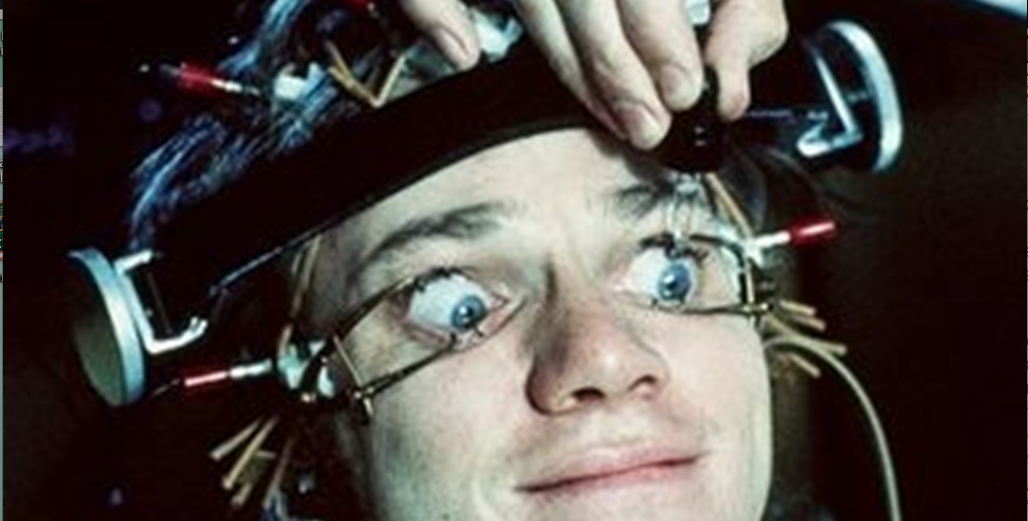
"We've gone from being exposed to about 500 ads a day back in the 1970s to as many as 5,000 a day today."
Jay Walker-Smith, Yankelovich Consumer Research
Hard to believe? Well, if you include the brand label on your undies when you put them on in the morning to the box your new tube of toothpaste came in that evening you can conceive you are exposed to branding messages thousands of times a day. This researcher also counted all the junk mail you probably don't read. But 5,000 ads?
A more reasonable figure for the marketing messages you see and hear daily is probably in the hundreds. Think about your average day, from the traffic report brought to you by Bob Jane T-Mart, the bus back for some show at The Star to the flyer for a Thai massage thrust in your hands as you walk past the poster for all-you-can-eat ribs on Wednesday nights. Then a barrage of down down retail ads on the TV during My Kitchen Rules, sponsored by some diet program. And those meet women in your area now!! ads on the side of your Facebook page late in the evening? What’s that about?
Whether it’s 300 or 3,000, we see so much that we register very little – and remember even less.
So if you were advertising your business don’t you think it might be wise to be distinctive and consistent enough to be recognised for something? Of course you would. So why is it most marketing communications is neither memorable nor consistent? Why doesn’t Qantas still call Australia home?
Why would an insurance company kill off its leading actors?
I can understand why an insurance company is killing off a 3 year ad campaign featuring Rhonda who now has a full time gig in a soap, but why did they drop the memorable jingle earlier? What have they got left to ensure we remember their brand? Who was that insurance company you may well ask? Ahhhhh, Allianz? No, when I double checked it was AAMI. You'd be forgiven if you haven’t been paying attention. Instead of keeping the sign off, "Luckyyyy, your with AAMIeeee", the ads no longer end with the sound of the jingle we’ve grown familiar with over 15+ years. Wonder why?

The average tenure of the CEO of an ASX 200 company is around 4-5 years*. The head marketer changes almost as often. Those brand managers on their way up move through more often, leaving behind their mark like my pug does on street posts. Which explains why the labels on all those Lindemans wines changed so often over the last decade. Southcorp then Treasury have destroyed so much brand equity because there were no custodians with a strong thread of brand DNA. Then each new agency wants to make its name, often at the expense of the advertiser.
Why will anyone remember your brand?
I was part of the team that created the "Which bank?" campaign for Commonwealth. It outlasted my time at Saatchi and survived a change of agency, despite their attempts to get rid of it. Brand building is like compound interest, you add a bit every year. And after a while it’s worth a fortune.
'Oh what a feeling' to be a copywriter for Toyota, knowing whatever the concept you come up with, the last 25 years of ads ensure the jump at the end will guarantee recognition by a half asleep viewer. Which is why the most successful marketing campaigns are the ones with legs. They go on and on like a Duracell battery.
It’s a fine balance between testing the new and stretching the offer without breaking the elastic brand. Some brands get it right. While there have been numerous small tweaks and occasional lapses, the VB can and the Coke dynamic-ribbon have survived decades of personnel changes. Less strongly managed brands seem to change annually. So when clients tell me they are getting tired of their campaign or their tag line or the font of their logo, I like to check if it’s busted first.
Sure we live in a world of rapid change, however, it’s more likely business survival and growth will come from product and service innovation and smarter marketing techniques, not from a new typeface. It may be a better strategy to refresh and re-launch rather than completely start again if you want to hold on to some rare customer goodwill. You’re doing well if they already have a small place for your brand pegged out in their cluttered head space.
Mortein tried to kill off Louie the Fly, but after over 50 years the public would have none of it. As John Laws used to say, when you’re on a good thing, stick to it.
Here's a Louie the fly ad from 1962
* Source: A Booz & Company study shows 23.5% of CEOs of ASX 200 companies left in 2011. Median tenure is 4.4 years and falling.
Read MoreThe top 20 valued brands in 2014
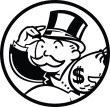
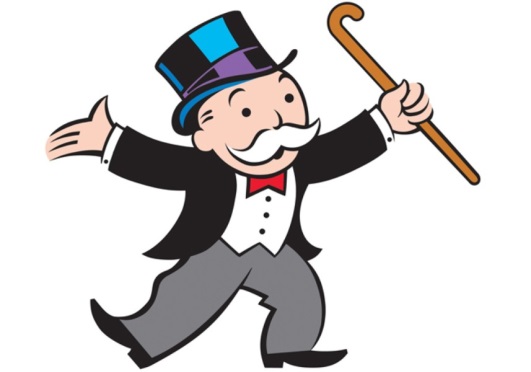
The world's most valued brands include some surprises. Coke is no longer it, in fact in the last year the brand value of Coca Cola has actually shrunk by 1%. Might not sound like much, but we are talking US$50million. A few more great ads like they used to make could have made a big difference to the bottom line. While there's a lot to lose there is a lot to be made by building a brand.
Innovation and marketing build brand value
Consider the year on year growth of Samsung as it continues to invest in product innovation and marketing. Now the number 2 in the world by brand valuation, Samsung increased it's value by US$20 billion over the last year. Coke slipped from number 9 to 12. Check out US telco Verizon, up from 10 to 5. Expect to hear more from them in Australia.
What are the highest valued Australian brands?
The value of a brand can be greater than the parts and isn't necessarily a reflection of the relative size of the business. While Australia's largest listed company by share market value is BHP, it doesn't rate on the scale for the book value of it's brand. The business with the highest valued brand in Australia is Woolworths. Woolworths sold $21 billion of food and liquor last year. The Woolworths brand is now ranked just outside the top 100 global brands and is valued at US$10.8 billion.
Racing up behind in second place is a newly invigorated Telstra which has re-invested, refreshed and relaunched it's brand over the past couple of years. The several millions spent on marketing has been rewarded, Telstra jumping 34 spots globally with an increase in brand value of over US$2.2 billion.
The banks brand valuations aren't the same as their market cap, but the shifts in brand value are a leading indicator of performance. ANZ is the smaller of the big 4 banks yet it has had a higher brand valuation for the last few years. But it's slipping, which helps give us an idea of which bank will grow faster in the coming years. ANZ, NAB and CommBank are all losing brand value and Westpac is climbing as they leverage stronger brand appeal to hold and grow customers.
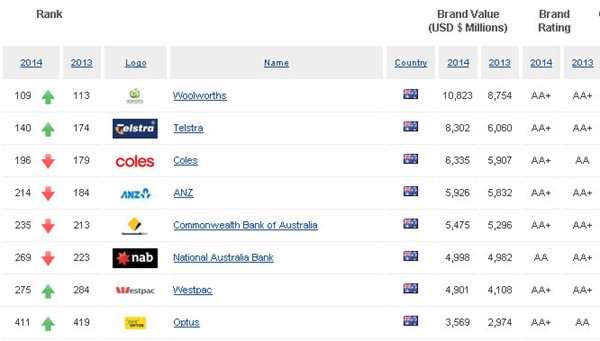
So when you're in the boardroom discussing the pros and cons of discounting to drive sales or investing in marketing, show your peers what a difference a brand makes to the bottom line.
Read MoreThe business benefits of a strong brand
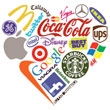
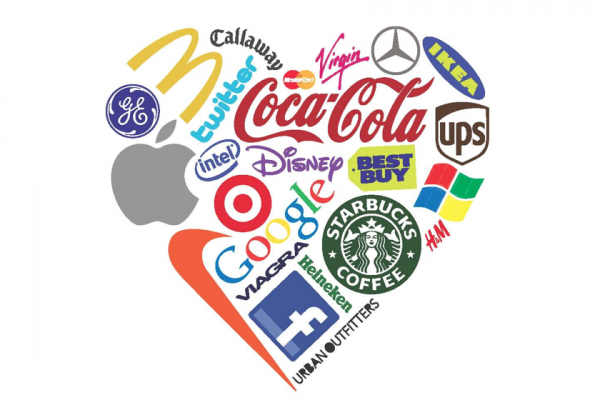
Remember just over a decade ago when IBM only sold big computers? Today most of us have more computing power on our smartphone and IBM is a consulting services business. UNO helped IBM make the transition to a service provider to mid-sized Australian businesses with a 4 year content publishing programme.
Many brands are having to change to survive
A few years ago if you wanted to find a business service you looked up the Yellow Pages. And if you wanted to make a call when you were out of the office you had to find a pay phone. It's amazing when you stop and think about how much the Internet has changed the way we do business.
Some once mighty brands like Kodak and Darrel Lea have disappeared, while others have successfully transformed what they offer. Have you taken the time to reconsider what your brand stands for in today's competitive market?
A brand is more than a name and logo
Your brand is what the public thinks you stand for. How you present your business shapes how your brand is perceived. Your brand is how your customers feel about you – the impression you make. It's how you look and how the way you speak. It's the unique way you reveal yourself to customers, from your choice of words to the typeface and colours you use.
If your business has been around for a decade then what your business does may no longer be well represented by what your brand is representing. Today's brands are distinctive yet flexible. Consider wWhat do Apple, Google and Virgin have in common? An ability to sell products and services across virtually any category by leveraging strong brand images that represent values that can be stretched as innovations are brought to market.
Strong branding is a smart business investment
Disciplined brand creation and consistant brand marketing is proven to deliver returns. Once you've differentiated your brand positioning, today you need to remember sales is no longer a linear pipeline, the power now lies with the customer. So for your brand to create wealth it needs to be discoverable across multiple touchpoints. With consistancy, the ROI from building a differentiated brand isn't just financial.
A strong differentiated brand enables the business to:
• Overcome competition based purely on price
• Prevent or slow decline of sales
• Hold on to existing customers
• Build sales leads
• Change perceived quality of your product
• Revitalise customer appeal
• Change company culture and boost employee morale
• Enter new markets
• Speed up product acceptance and trial
• Morally discourage competitors’ salespeople
• Raise capital more easily
• Sell a business more easily
See UNO's proven Formula for Growing Challenger Brands.
Read MoreWho owns the world's best known brands?

"Brands are intangible assets and account for, on average, 75% of the value of a company."
– Blake Deutsch
Investors don't value what businesses make. The sharemarkets around the world have placed the most value not on production, rather they value the power of brands. Most share prices are a reflection of the future earning ability of a brand. The brands people most recognise also get the most votes from investors.
Just ten global companies own a surprising number of the world's best known brands.
From cat food to confectionary, shampoo to fragrances, each of these companies use their marketing skills to create shareholder value. As well as the dairy brands you probably associate with Nestle, the Swiss company also owns some of the most renowned brands in other diverse categories. Most people are surprised to see just how many categories just ten global corporations are active in. (View on Pinterest):
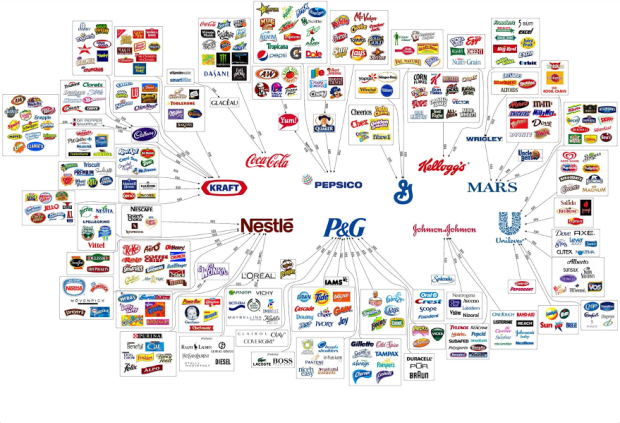
See larger image on Pinterest.
The big benefit of differentiating your brand is pricing power
The same marketing disciplines that are used to by Nestle to differentiate Kit Kat are leveraged by Nestle in other categories like fragrance. Georgio Armani Beauty is a Nestle brand, with Cate Blanchett its public face. Differentiation is why Nestle can charge a premium for perfume, Purina pet food and Nespresso coffee capsules.
In an Internet enabled world, where prospects can literally buy anything from anyone, it is now essential to differentiate your brand. It is differentiation that will ensure long term sustainable and profitable business.
Big brands have the world covered, which opens market niches to the nimble
The good news for challenger brands is the majors have slimmed down their portfolios over the last decade to concentrate on a smaller number of brands they can manage globally. So if you now apply the same proven brand marketing disciplines in niche markets you can most likely do so knowing there will be less competition from big global players.
As for Armani the fashion brand, it's still a family owned business with Georgio, it's 78 year old founder, still at the head. See how UNO grows Challenger Brands, including a number of successful Australian family businesses, just download our free eBook.
“Brands are intangible assets and account for, on average, 75% of the value of a company.” - Blake Deutsch - See more at: http://www.r-co.com.au/brand-building-for-business-success/#sthash.XGEEw6MT.dpuf
Who tweets about brands?
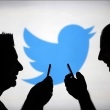
Technology companies get the most tweets
If Twitter users are image shapers, setting the trends in awareness in our society, it follows that marketers want to see their brands tweeted. Research by Nielsen has for the first time shown which brand categories are most tweeted, and who is doing the tweeting. Technology companies lead, followed by restaurants.
How to get people tweeting about your brand?
Be seen on TV. The age old adage, fame is the name of the brand game is underlined by the fact the brands people tweet about are the brands seen on what is still the world's mass market medium – TV. Perhaps this explains why the biggest brands still invest in TV advertising, it's the one medium that they can still use to shape mass opinion.
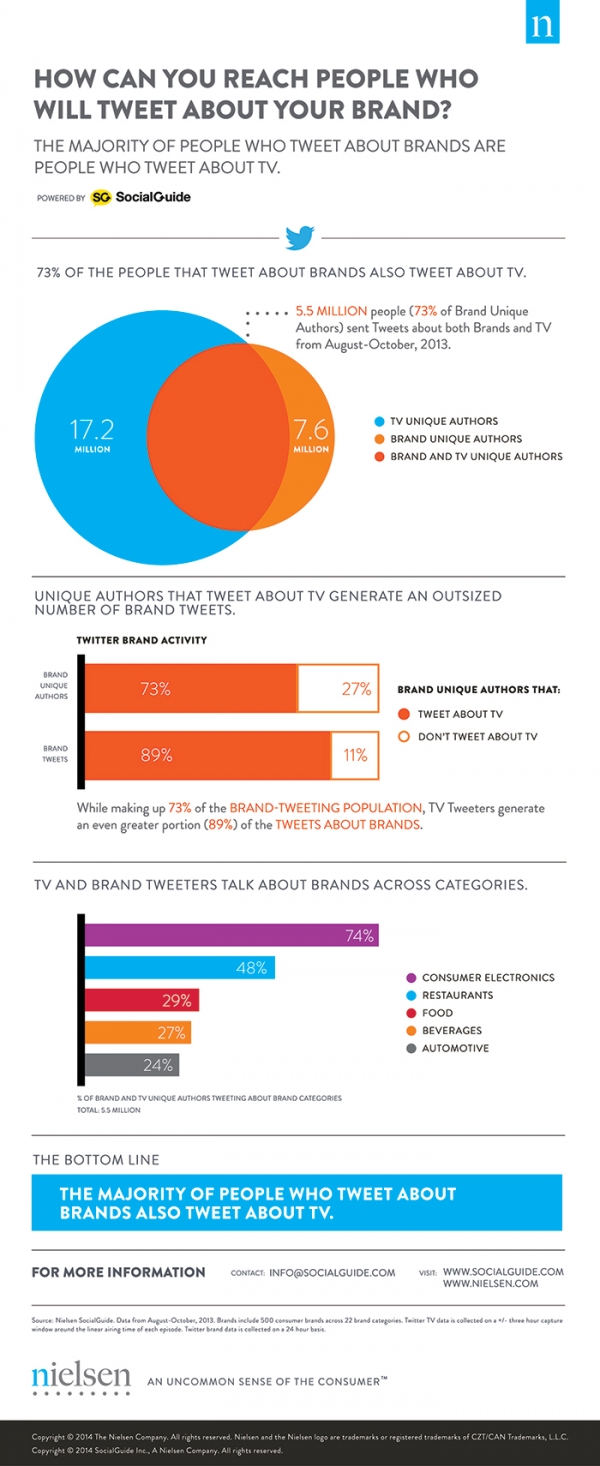
What Australians look for when shopping online

Myer missed the post-Christmas online retail rush, and it was BIG. On 1 January, The Australian Retailers Association put an update out on expected post-Christmas sales from Boxing Day to 14 January to be $15.1 billion.
You may have read Myer's site was down for over a week. CEO Bernie Brookes told shareholders it wasn't a big deal because online represents just 1% of Myers sales. I'd be wary of investing in a retail business that doesn't realise the importance of e-commerce.
6.4% or retail shopping is done online
In the year to November 2013, Australians spent $14.6 billion* on online retail. This level is equivalent to 6.4% of spending with traditional bricks & mortar retailers. Some discretionary spending categories are already well into the double digits for online sales. Despite Bernie's spin about the insignificance of his own online sales, in fact Myer's business plan has a 5 year target for online sales of 10%.
I've been brushing up on online retail best-practice
Those retailers that did get a share of the online post-Christmas sales rush now have stats on what worked for them. Fortunately we can all learn from what Australians did over Christmas thanks to a survey by Credit Card Selector of online gift purchases. Here are some of the insights on what shoppers are seeking online...
Why Australians purchased Christmas gifts online rather than instore
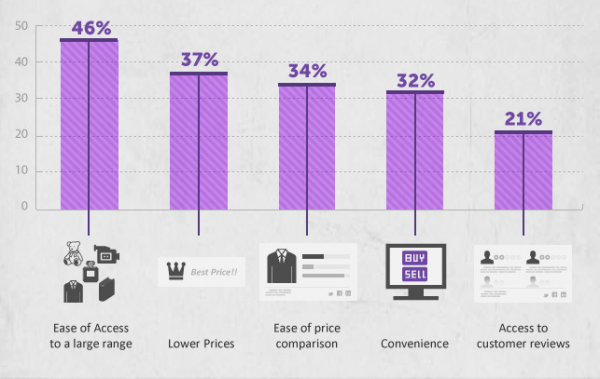
How shoppers find online stores
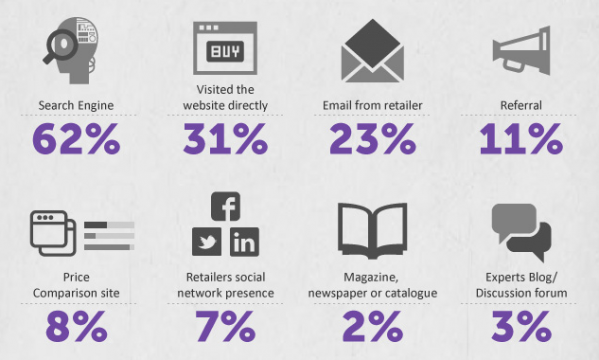
What gifts shoppers bought online in 2013
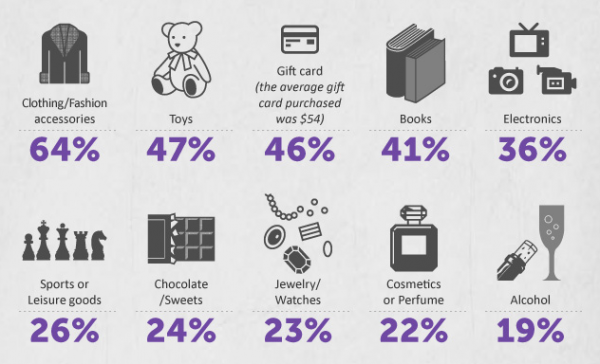
What would make an online shopper buy again
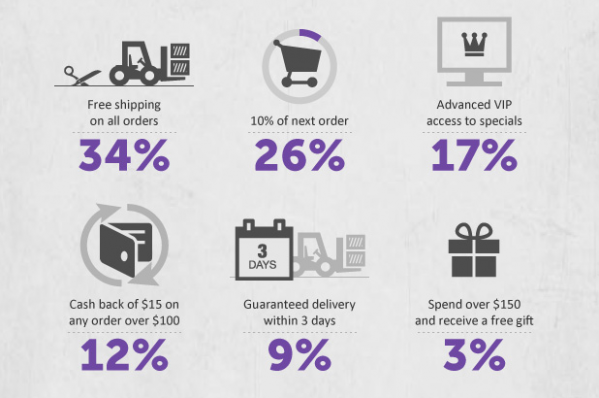
* Source: NAB Retail Index
Read MoreHow can you measure a marketer's contribution to the business?

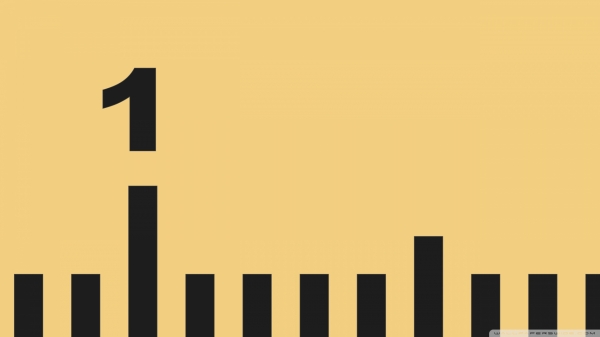
CEOs and business owners often ask me what’s the best way for them to measure my contribution to their business. The business of business has never been more complex, yet we are actually in an era where marketing is one of the few levers left that management can actually control to engage customers. And that’s how a marketer is best judged – by the improvement of the brand’s engagement with customers.
Marketing is all about the customer. The customer
Don’t just take my word for it.
A survey of CMOs across 92 countries reveals consensus – the most valuable measures of marketing’s contribution are in the areas of engagement and “brand health”. Health being a bit of a catchall word for the grab bag of KPIs that show how much customers recognise you, like you, value and understand what you stand for. They also ranked the capabilities that will be more important to marketers over the next 5 years.
KPIs for measuring marketing effectiveness
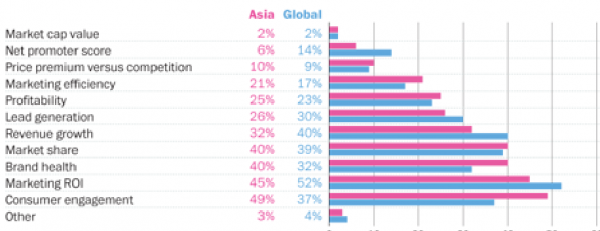
Source: The Marketing 2020 Report, Effective Brands survey of 10,000 professionals across 92 countrie
The capabilities most important for marketers in 5 years
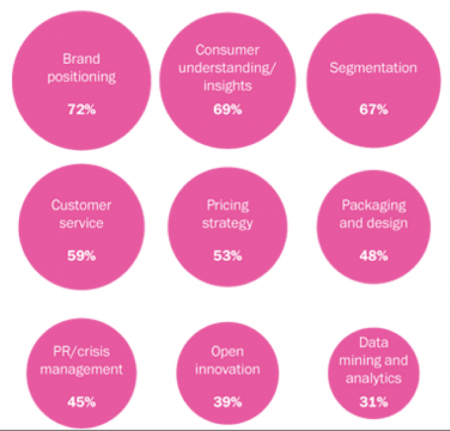
How to manage the 9 biggest marketing challenges
Here is how we manage the biggest marketing challenges today:
- What do you stand for?
Define your differentiated positioning in the market that not only you have a passion for, enough prospects will pay for. - Know your customer
Base your story on what customers genuinely care about that you can deliver. The features with benefits that ideally are unmet by competitors, or unknown to prospects. Think like a challenger brand. - Define your target audiences
Don’t attempt to sell something to everyone. It’s the era of niches within subgroups. Align your messages to what each customer target cares about. - Customer service
Never over promise, always over deliver on expectations.See some of the proven ways to foster customer loyalty here. - Pricing strategy
Remember pricing is a two way lever, framing value to maximise profit is the game, not cost plus pricing, that was the era of mass market production line manufacturing. Be nimble and exploit unique profit opportunities from short term market mispricing. Then find another. - Packaging and design
Sell the sizzle. Creativity and a consistent brand image increases cut through, recall and engagement and helps you command a price premium. Bad ads are bad for business. Stand out and apart. Safe isn’t just boring, it’s high risk. - Be prepared for a crisis
The Internet now makes everything public and places the power in the customer’s hands. Have a plan. Tell the truth, you’ll be outed if you don’t. Make sure you know your legal position with social media. - Innovate for growth
Or die. Big business struggles to change, this is the great advantage for those who aren’t market leaders. Become a challenger brand by zigging while the category zags. See the bottom line benefits of innovation as determined by AIM, they are significant. - Data
We are now in a digitised world. The companies that have the most data on people have the power to own their custom. Whether you are a manufacturer, distributer, service business or retailer, the business that makes the most of data will control the money.
Read More
Email outperforms social media for new business, by far


McKinsey has just published some research I wrote about last year on the ineffectiveness of social media for customer acquisition. While marketers have increasingly jumped on the social media bandwagon, the stats show the effectiveness of Facebook and Twitter as a method of acquiring customers has remained flat. In contrast, email’s share of customer acquisitions has shot up over the last three years by 700%.
% of customers acquired by channel
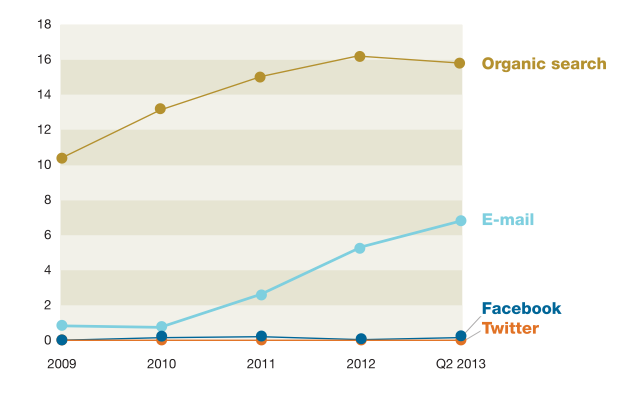
Source: Custora, E-Commerce Customer Acquisition Snapshot, 2013. McKinsey iConsumer survey
The tip for challenger brands here is to zig when the others zag. The more your competition and every other marketer swamp social media with activity, the less likely you will be noticed. Personally, every time I now venture onto Facebook I am actually getting rather tired of being targeted by advertisers for diets, wine and dating.
Facebook is out of favour for new business
In the quest to deliver Facebook shareholders a profit, marketers are being encouraged to spend big. Meanwhile Facebook users are beginning to move on. The statistics show us those marketers who continue using email can expect 40 times the customer acquisition than from Facebook and Twitter combined.
That's not to say I'm recommending mass email blasts. The frequency of spam in your inbox is why marketers now have to be more discerning in what they send and who they send it to. For instance, Qantas has a frequent flyer database of 10 million members, slicing and dicing and and segmenting offers with hundreds of individual creative executions.
When Email marketing, remember what’s in it for the customer
Most of us hate spam. Prospects and customers however generally appreciate receiving an email when it concerns something of value to them. Depending on your category, different days of the week achieve higher responses. And of course, research on brand recall has proven the more creative your message, the more your brand will be remembered.
So make sure your email campaigns are well crafted and you offer a real benefit aligned to a genuine customer need. In other words, smart marketing not spam.
Read MoreHow Private Label hollows out brands

Australia is unique for the oligopolistic power of just two supermarkets. Coles and Woolworths have 80% market share of an industry valued at A$80+ billion.
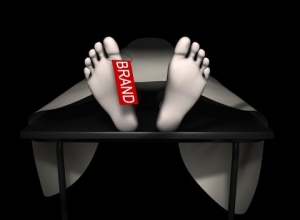 In the UK, the two major chains Tesco and Sainsbury have 48% and the US equivalent is just 20%. Consequently when our retailers brought in management from the UK to apply the successful Private Label model developed by Tesco and Asda they did so with the potential to have a significantly bigger impact on our market overall.
In the UK, the two major chains Tesco and Sainsbury have 48% and the US equivalent is just 20%. Consequently when our retailers brought in management from the UK to apply the successful Private Label model developed by Tesco and Asda they did so with the potential to have a significantly bigger impact on our market overall.
Private label is no longer cheap generic Black & Gold commodity lines, it's the key to the retailers growing profit at the expense of both brands and producers. Whether you are in the FMCG business or a service business, the Private Label strategy is one that threatens every business as the company with the most customer data gains ownership of the sales process.
Global FMCG brands now struggle to turn a profit in Australia
In the last year major FMCG brand owners like Unilever and Nestle have publicly lamented their lack of power in this country to compete with the oligopoly's own brand agenda. While we have more supermarkets per capita than the US and nearly 3 times as many as the UK, the 10,000 Australian independents have so little share and such disparate distribution requirements for fulfilment they offer brands little scope for profitable scale.
Most shoppers don't realise they're being had
The trend to consumer demand for more brand choice and gourmet choices is being matched by Woolworths by it's purchase of Macro Wholefoods and roll out of Thomas Dux stores. Not only have Woolies out-merchandised the Harris Farm model, they've done an even better job in wine.
Together, Coles and Woolworths have over 50% of the liquor market, not just through retail store brands like Dan Murphys, Liquorland, 1st Choice, Porters, Theos and Vintage Cellars, but the big online database driven direct marketers like Cellarmasters and Langtons. Here is how Choice sees it:
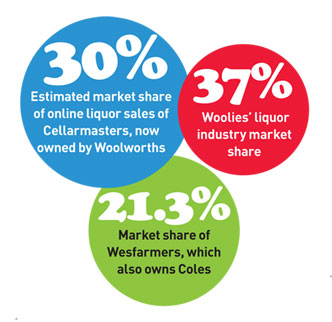
This dominance has enabled the two majors to dictate what brands you can buy. They have delisted most small vineyards and substituted them with a cynical excercise in facadism. There is a plethora of over 240 Private Labels masquerading as boutique wines giving the impression of choice. They are merely made-up attractive wine labels stuck on bottles of mass produced vin ordinaire. From Abbey View to Willowbrook, see the list of fake wine brands for yourself.
Now they are using their data Intelligence to segment and market everything from Private Label credit cards to health insurance. For instance, they use loyalty card tracking of grocery purchases and the knowledge that if you eat red meat you are a better actuarial risk to target the insurance sales process. What insurance company can compete with this big brother view of Australians?
How does a business compete with this onslaught? A study by international branding expert Professor Mark Ritson of Melbourne Business School gives some insight...
The formula for Private Label success
• Lack of perceived differentiation between brands in a category
• Lack of value innovation of incumbent brands
• Increased proportion of price promotion activity
• Available production capacity
• For me products
• Smart retailers
• Competitive retailers
• Concentrated retailers
The power of the retailers in this market allows them to demand more price promotion from brands, which leaves little in their budgets for brand building marketing campaigns or new product innovation. In no time the brand values are hollowed out, leaving the category ripe for Private Label substitution.
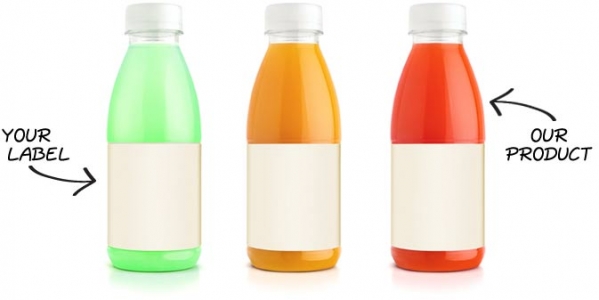
The Seven stages of Private Label dominance
Stage 1: Price-based generics (Home Brand, Black and Gold etc)
Stage 2: Copycat (Penguin vs Puffin biscuits)
Australia has passed here and well into the next stage.
Stage 3: Good, Better, Best (Tesco Value, Tesco, Tesco Finest)
Stage 4: Flanker brands (brand extensions to attract brand 'switchers')
Stage 5: Category leaders (Sainsbury Extra Special Tea Bags)
Stage 6: Non exclusive (expanding beyond the store)
Stage 7: Legal monopoly
The supply side to killing brands
The no-name supplier is offered a carrot to become the stick that wacks the known brands.This business is often an existing maker of their own known brand line. Why would a Heinz for instance supply Woolies Private Label baked beans? This is what attracts them:
- Usually opportunistic origins
- Often based on excess capacity utilisation
- Any contribution over variable costs of production is seen by management as good
- Less profit... but still profit
Where it leads is usually not so positive. Here is what happens when the no-name supplier exceeds production capacity:
- Increased production costs for same or less profit
- Cannibalisation of existing branded product
Gradual strategic 'split':
- From brand builder to PL supplier
- Internal resources get utilised
- An implicit strategic change
Change of business from:
- Brand builder / innovator / consumer focus to
- PL supplier / cost cutter / business customer focus
Private Label and the weaker brands are consolidated:
- As PL grows weaker manufacturer shares decline
- Brand fights brand – not PL
- To maintain brand and shelf presence, 'lesser' products become 'propped' up with disproportionate costs
- Resources become further diluted
- Finally, once mighty brands are de-listed by the duopoly
- The retailer approaches a new potential supplier for PL, and so it all repeats
How high can Private Label go? (How low will brands fall?)
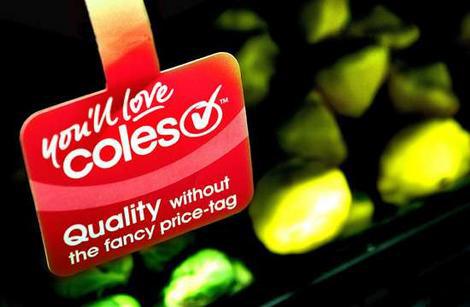
Private Label share in Australia today
23% is current floor
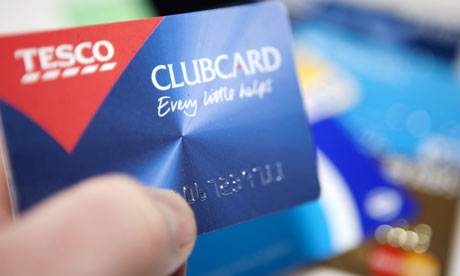
The UK is in the middle
50% Private Label
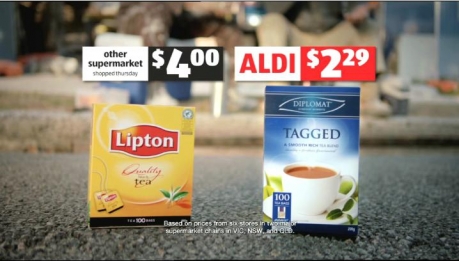
Theoretical ceiling
95% of product in Aldi is Private Label
Get social media right or "you're stuffed"

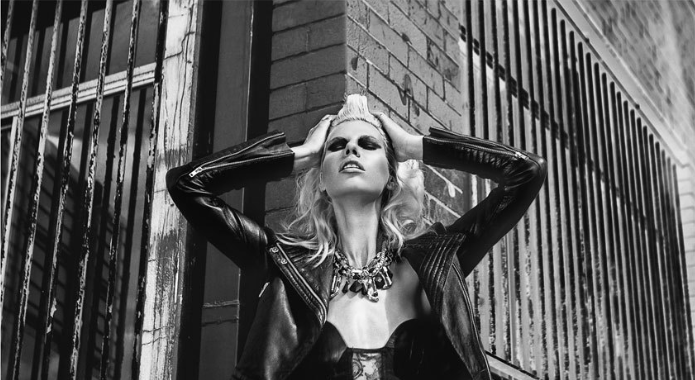
Every time you use something that you aren't being charged for, remind yourself, it's because you are the product. SMH.com.au, LinkedIn, Facebook, Pinterest all let you read and/or post for free because they are making money out of YOU. Businesses of all kinds are constantly gathering data from you and about you and your contacts most of the time you do something digitally. Facebook can now access your phone’s microphone to eavesdrop on what you are listening/watching while you post an update.
The upside is you will be served ads or content or search results that have been vetted just for you. The downside if you're marketing your own business online is you have to recognise the average person will increasingly expect to receive only what they care about.
Social marketing 101: What's in it for your customer?
As Jane Caro told a room full of online marketers recently, people are "entirely able to screen you out no matter how much money you put behind (your message.)
“If the message is not relevant, if the message doesn’t mean anything to them, you’re stuffed.
“the power has moved from those people with large pockets to the population at large. But you can have no money at all and send a Tweet that resonates and takes off like wildfire and suddenly you’re famous.”
Research by McKinseys has shown businesses have found the primary benefit of embracing social media is the ability to open a dialogue with customers and actually listen to what customers want. Not talk at them like a brochure, but understand what they care about and respond, or learn and move on. Here's a reminder of the simple etiquette of doing a business on the Itnerweb.
3 rules of social media engagement: the 3 Rs
To participate in social media as a representative of an organistion or company it is important to remember 3 rules.
Be clear about who you are representing, take personal responsibility for ensuring that any references to your company are factually correct and accurate and do not breach confidentiality requirements, and show respect for the individuals and communities with which you interact.
Remember, you are personally responsible for the content of the posts online. If employing a ghost writer, it is your responsibility to sign off on final content. Ensure any information about your products and services that you provide is true and factually accurate.
Respect copyright, privacy, financial disclosure and other applicable laws when publishing on social media platforms.
If you break the law you may also be personally liable.
Read MoreThere is no best way to compete

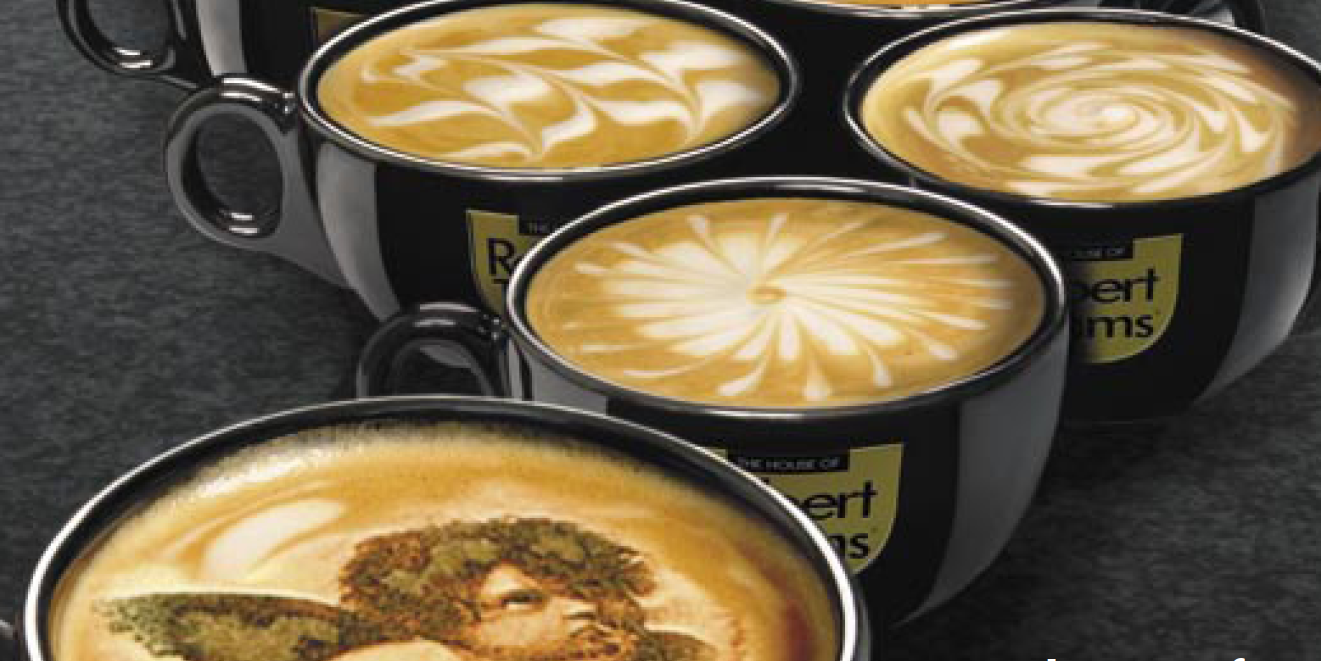
Remember that scene with Steve Martin ordering coffee L.A. style – "a half double decaf decaffeinated half caf... with a twist of lemon." (The video is at the end for you to enjoy.) It seems every single decision we now make throughout the day comes with an endless number of choices.
So it came as no surprise when a global a marketing guru presented research to the World Business Forum in Sydney that proves, in industry after industry, there is no single best way to compete.
How to differentiate your brand today
The worst mistake in strategy is to compete with rivals on the same dimensions, Professor Michael Porter says. The man who’s made strategy his life work says many businesses still get confused around the definition of the concept of differentiation, and that even trying to be ‘the best’ means a business is starting in the wrong place strategically.
Porter points out "we all know it’s impossible to meet every need of every customer uniquely well. That’s impossible. There’s no one way to deliver value.
“Strategy starts with a notion that the fundamental question is not how to be the best, it’s actually how to deliver something unique. To the customers you’re choosing to serve. Not because what you’re doing is ‘the best’ but because what you’re doing is delivering distinctive value.
Strategy is about being unique. That’s ultimately what all successful companies are able to achieve for some period of time."
The formula for growing challenger brands
If today we are spoiled for choice, it follows the prospective customers for our business are too. So instead of seeking some magic wand global answer, a better strategy is to identify one thing people you're trying to serve actually care about. Something that you're good at delivering. Finding your mojo is the fundamental starting point in our formula for growing challenger brands.
Read More
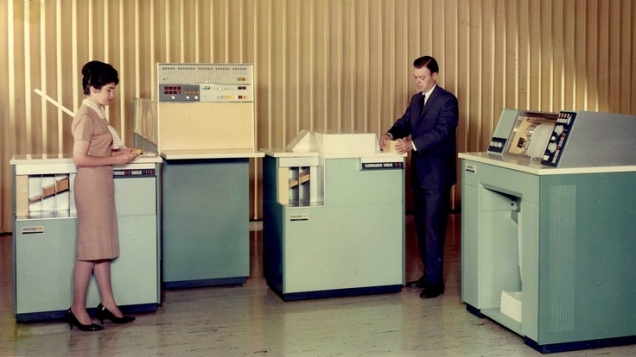
The head of marketing will soon be spending more on IT than the head of IT, so a recent study by Gartner found. Last week at the annual adfest in Cannes, Ogilvy's top creative warned of how too much faith was being put into data and not enough into ideas. This was resulting in well planned and placed ads that don't actually achieve much.
Where is the real value to be found in marketing?
The more things change the more they stay the same. The problem in the past was IT managers spent a fortune, first on hardware and then software to sytemise the running of the business. Whether or not the customers' experience was improved was not the concern of the CIO. You only had to dial 3 for support to know that. The main focus of the CIO was all about having bragging rights his IT budget was bigger than the competitors'.
Now we are seeing marketing managers playing the same game, "my Big Data budget is bigger than yours." Businesses are paying more and more to collect big brother levels of information on people. You've experienced the result like everyone else – being hit with ads on Facebook when all you want to do is see a picture of a friend's fishing trip. This may be how Zuckerberg will try to make an earn for shareholders, it isn't the road to marketing Nirvana. Just like the IT managers of the past, what the customer wants once again isn't the focus.
The constant here is managers within the business concentrating on the business of the business, rather than looking for ways to make a customer's life better. You probably recognise the trap, I fell for it. For several years I paid too much time and money on experienced professional staff and IT consultants to implement and manage programs to systemise my business. None of it added to the power of connecting and motivating, inspiring or creating. It was money spent on smooth bureaucracy for neatness sake and failed to grow my customers' businesses, nor consequently my own.
Rational Vs emotional marketing approach
"Investment" in IT has always been a rational spreadsheet sell to the chief decision maker. How often have you witnessed a marketing department asking for a "brand building" budget lose out to the CIO who could promise a guaranteed ROI from some new IT? Problem is marketers seem to be giving up the fight at the board level for using emotion to connect with customers, instead choosing the easy route of asking for funding for data. Spend X get Y. Yet economic modelling consistently shows the customer is innately irrational, human beings are pre-programmed that way. This is at the heart of getting the best marketing ROI.
Your customers are more emotional when making purchase decisions than rational
The influential role of emotion in consumer behavior is well documented, here is a summary by Antonio Damasio, professor of neuroscience at the University of Southern California –
- MRI neuro-imagery shows that when evaluating brands, consumers primarily use emotions (personal feelings and experiences) rather than information (brand attributes, features, and facts).
- Advertising research reveals that emotional response to an ad has far greater influence on a consumer’s reported intent to buy a product than does the ad’s content – by a factor of 3-to-1 for television commercials and 2-to-1 for print ads.
- Research conducted by the Advertising Research Foundation concluded that the emotion of “likeability” is the measure most predictive of whether an advertisement will increase a brand’s sales.
- Studies show that positive emotions toward a brand have far greater influence on consumer loyalty than trust and other judgments which are based on a brand’s attributes.
So it follows a business that concentrates on chasing efficiency by spending big on data risks failing to connect on the more powerful emotional level.
Challenger brands care most about what the customer thinks matters most
Challenger brands that actually care about what customers want are winning by using the Cloud to remove superfluous steps from the delivery of products and services, often without big IT budgets. One example I know intimately is an Australian first, UNOsmsf, Cloud based Self Managed Super.
The rational customer benefit: More choice, more control, lower fees. We'll be using an emotional truth to appeal to prospective clients: your fund can do better than your mates with more money who are paying through the nose for an average product the big banks want to sell them using big data.
Check out the superannuation challenger brand taking on the banks from the Cloud.
Read More
Top 5 biz management blunders


Have you read any of Robert Gottliebsen's recent articles on the impending 12 billion dollar plane crash coming our way? Australia's purchase of three squadrons of Joint Strike Fighters – 58 at over $100million each is a fine example of the 5 management blunders many businesses tend to make.
5 blunders for management to avoid (& tips on marketing)
Gottliebsen quoted Liberal senator Jensen, a scientist, explaining what a blunder the decision to purchase the JSF is proving to be. Here I paraphrase Robert, with my own warnings on the blunders to avoid when making decisions about marketing::
Rule 1 of management blunders
Ignore expert advice and go with your gut. A decade ago Australia's manager at the top, John Howard, ignored the advice of aviation experts and bought into the development of the JSF. In my experience, being told the CEO doesn't believe in marketing or paying for external advice is more common than finding a boss willing to admit where their expertise ends.
Rule 2 of management blunders
When you make a big decision, those who continue to oppose you need to be pushed aside -- everyone must get with the program. Creativity is stifled by group think, yet it's creative thinking that helps businesses compete on their own terms, rather than taking the category head on.
Rule 3 of management blunders
All staff involved in the decision are ‘looked after’. E.g. In the case of the JSF, Senator Jensen has studied carefully what happened and says "there are too many who get jobs with contractors where they have provided advice favouring that contractor's product.” Advertising is renowned for managers procuring from friends who are designers, family members who know photoshop and printers who give them tickets to the rugby.
Rule 4 of management blunders
Delay as long as possible in telling the people at the top that the decision is wrong. In corporations, big, sudden write-downs are often caused because management down the line keeps putting a good spin on the data to keep their jobs, until finally they have to confess. Or in my experience, they are found out long after they've moved on. One CEO didn't realise that for two years none of my proposals to fix their problems had ever been passed up to him by his marketing manager. It was only after firing the manager he discovered an email trail where my strategies and estimates had been constantly forwarded to her close friend, who was then being commissioned for services beyond their capability at far higher prices.
Rule number five
Obscure the costs with all sorts of creative accounting. In marketing and advertising, this is really easy when so many managers claim to know the cost of everything, when they actually don't understand the value of anything.
The common theme here is the tendency of management to throw staff at problems, at great long term cost, when trusting experts would be better for business.
Read More
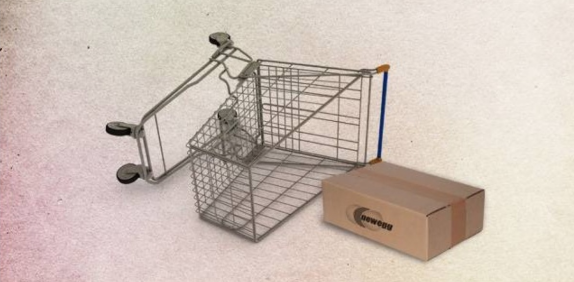
The idea that online retail is about discounts isn't in line with the facts. While margins might be tighter, e-commerce is no longer just about bargains and end-of-line clearances. The latest NAB Online Retail Sales Index shows just how broad Australian retailing has become. Daily Deals sites are stuck at 3% share. The biggest online sales growth stories now are in liquor and groceries.
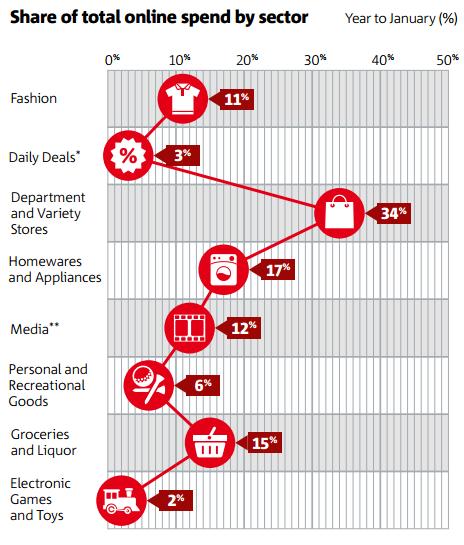
Department stores and appliance retailers the big winners, or losers online?
The mainstreaming of e-commerce can be seen in the leadership of department store products with a whopping one third of online spending. Once slow to adopt, Myer now offers 119,000 individual products online.
Domestic operators still have the lion’s share of online sales at around 75%. Gerry Harvey’s call for a GST on foreign online sales is just noise when you consider he mostly sells homewares and appliances, the second largest online category. I don’t see Australia Post delivering washing machines bought from Best Buy New York via their online store as a threat to Gerry. The threat is internal, his stores are failing to add value to the sales process and Harvey Norman still doesn't appear to have a strategy to compete with local online challengers.
Challenger brands have an advantage online
If anything, e-commerce puts the power back into the hands of customers who want to deal direct with manufacturers. Australian challenger brands, when they make a product that locals actually want, can cut out the blood sucking Coles/Woollies duopoly and the Gerry Harvey’s.
When brands reinvest into marketing a portion of the retailer margins that going online cuts from the delivery chain, they can grow share long term. This way e-commerce becomes a WIN, WIN equation for brand and customer.
An example of this approach is the transformation of a traditional Australian designer manufacturer of compression and sportswear – Quick Response. UNO has helped them transform from a wholesaler at the mercy of retailers to a direct-to-consumer e-business. This challenger brand is now competing with SKINS, (the retail market leader with a high priced foreign made product), by offering superior Australian made garments direct online, at a better price. Check out the QRS compression online store.
The future for online retail marketing
While retail sales generally have been mostly flat, ABS figures show Australian’s spent 27% more online in the year to March than the year before.
The NAB online spend index doesn’t include online shopping paid for by Paypal, transfers or EFTPOS, so the 6.5% of all retail spending measured in the latest report to March 2014 is an underestimate of the reality. Marketers need to view online retail as a growing opportunity for current business growth, not just a nice to have in the future.
Source: National Australia Bank Online Retail Sales Index.
Read MoreTruth in advertising?
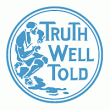
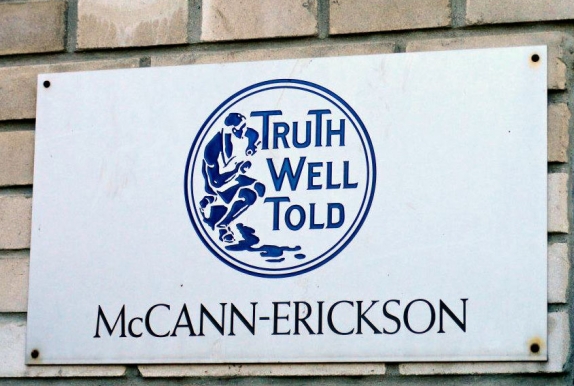
Which professions are most trusted in 2014? Research shows the Australian public rate nurses 91% for ethics and honesty, once again at the top, whereas most professions don't rank well in the trust stakes at all.
No prizes for guessing who rates last at 3%, it's the same profession that has been at the bottom every year since Roy Morgan began their annual "Image of Professions" survey in 1986.
2014 rankings of professions for ethics and honesty
- Nurses
- Pharmacists
- Doctors
- High Court Judges
- Dentists
- School teachers
- Engineers
- Police
- Supreme Court Judges
- University lecturers
- Accountants
- Bank managers
- Lawyers
- Ministers of religion
- Public servants
- Public opinion pollsters
- Financial planners
- Directors of public companies
- TV reporters
- Newspaper journalists
- Business executives
- Insurance brokers
- Stock brokers
- Talk-back radio hosts
- State MPs
- Federal MPs
- Union leaders
- Real estate agents
- Advertising people
- Car salesmen
Source: Roy Morgan annual 'Image of Professions' survey for 2014
Read MoreSince the GFC businesses and investors have struggled to find consistent ways to achieve double digit returns. You can continue to blame the shake out that the credit crunch brought down on our heads, or perhaps the current tough environment is the new normal. The new normal is a world where businesses and governments and media proprietors no longer have control. Everything has been digitised, and thanks to Google and global Internet access from mobile phones at low prices the slevers are now controlled by the public, your customers.
The last decade has seen what Deloitte term the era of Digital Disruption. In a paper last year they identified which Australian industries are facing a short fuse, big bang trashing of their business models. Traditional business models that could control supply and demand and charge a premium have dissappeared or in the case of Delloittes hit list of financial services and are about to.
The businesses that prosper will be those that can embrace the new digital normal. It is the business managers that apply design thinking to their entire way of operating that will survive. The good news for SMEs is they have eless to lose than corporations and also have the management structure to embrace change. The best thing about all this si design thinking makes more money for a business than traditional management approaches. Here are some figures on just how much more profitable design centric businesses have been since the GFC.
Design Thinking has doubled the returns of companies across a range of industries
The Design Management Institute in the US worked together with Motiv Strategies to create a share market index for tracking the returns of businesses that have Design Thinking at the centre of the organisation. Called the Design Value Index, it shows the 15 rigorously-selected companies that understand the value of design beat the S&P Index by a whopping 228% over the last 10 years.
Who are these profit powerhouse businesses and what do they have in common?
Design is an integrated function across the entire enterprise; they invest in design and it shapes the way employees interact and report, management structure is flat or receptive to ideas; experienced design executives are given power to direct design activities; and there is a senior leadership-level commitment to design. Some of the companies on the list won’t surprise you – Apple, Coca-Cola, Walt Disney and Nike. Others might – Ford, Herman-Miller, IBM, Intuit, Newell-Rubbermaid, Procter & Gamble, Starbucks, Starwood, Steelcase, Target and Whirlpool.
Designers are lateral thinkers, utilise their creative leaps
The way designers think is much more open to ideas, random thoughts from diverse sources and then building on these. By starting with the question what does a customer want and what makes them happy the designer is liberating from current accepted practices within a business. They challenge all aspects, collaborating across all the people in a business from sales to complaints, production to procurement. Compare this to control and command structures, like the public service where you aren’t allowed to ask a superior a question let alone challenge what they believe is the way it’s always been done.
Change, rather than wait to be redundant. As Deloitte warns, redundancy is coming sooner rather than later.
Read More
Since the GFC businesses and investors have struggled to find consistent ways to achieve double digit returns. You can continue to blame the shakeout that the credit crunch brought down on our heads, or accept that the current tough environment is the new normal. We now have to operate in a world where businesses and governments and media proprietors no longer have control. Everything has been digitised.
Thanks to Google the information levers are now controlled by the public. In other words, your customers now call the shots.
to Google the information levers are now controlled by the public. In other words, your customers now call the shots.
The last decade has seen what Deloitte term the era of Digital Disruption. In a paper last year they identified which Australian industries are facing a short fuse, big bang trashing of business models. Traditional business management techniques that could control supply and demand and charge a premium have disappeared. You can see from Deloitte's hit list, even industries not used to rapid change like financial services and arts and recreation are about to face significant disruption.
Deloitte's Digital Disruption map
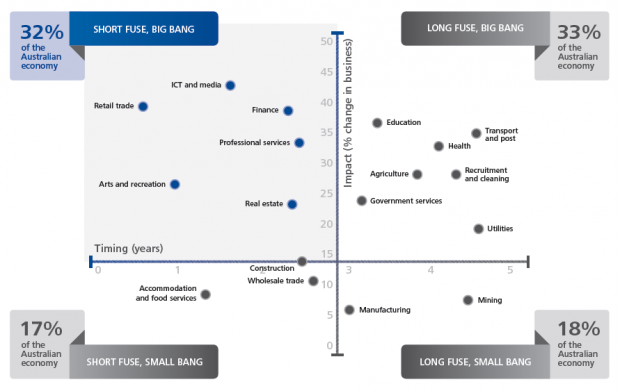
The formula for small & medium business survival in this time of disruption
The businesses that prosper next year and beyond will be those that can embrace the new digital normal. It will be the business managers who apply design thinking to their entire way of operating that will survive. The good news for SMEs is they have less to lose than corporations and more flexibility in the management structure to embrace change.
SMEs are perfectly placed to become tomorrow's challenger brands. The best thing about all this is design thinking makes more money for a business than traditional management approaches. Here is a chart that shows just how much more profitable design-centric businesses have been since the GFC.
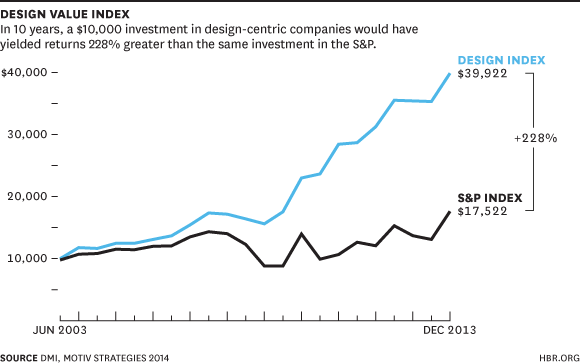
Design Thinking has doubled the returns of companies across a range of industries
The Design Management Institute in the US worked together with Motiv Strategies to create a share market index for tracking the returns of businesses that have Design Thinking at the centre of the organisation. Called the Design Value Index, it shows the 15 rigorously-selected companies that understand the value of design beat the S&P Index by a whopping 228% over the last 10 years.
Who are these profit powerhouse businesses and what do they have in common?
Design is an integrated function across the entire enterprise; they invest in design and it shapes the way employees interact and report, management structure is flat or receptive to ideas; experienced design executives are given power to direct design activities; and there is a senior leadership-level commitment to design. Some of the companies on the list won’t surprise you – Apple, Coca-Cola, Walt Disney and Nike. Others might – Ford, Herman-Miller, IBM, Intuit, Newell-Rubbermaid, Procter & Gamble, Starbucks, Starwood, Steelcase, Target and Whirlpool.
Designers are lateral thinkers, utilise their creative leaps
The way designers think is much more open to ideas, random thoughts from diverse sources and then building on these. By starting with the question what does a customer want and what makes them happy the designer is liberating from current accepted practices within a business. They challenge all aspects, collaborating across all the people in a business from sales to complaints, production to procurement. Compare this to control and command structures, like the public service where you aren’t allowed to ask a superior a question let alone challenge what they believe is the way it’s always been done.
Change, rather than wait to be redundant. As Deloitte warns, a big bang of disruption is coming sooner rather than later for most businesses.
Read MoreHow do you lead your business in the Digital Age?
The answer is in the mail. Australia Post is over 204 years old, but that hasn’t stopped it making the most of the digitised world. At a presentation to business leaders at the AGSM Leading The Digital Enterprise event yesterday, I found Tracey Gosling, a director of Australia Post, the biggest surprise. While the usual suspects, like the Head of Policy at Facebook and an author on Innovation helped open the eyes of the bank managers and bureaucrats in the room to the way generation X and Y want to be treated at work, it was the true stories of change at Australia Post I found most useful.
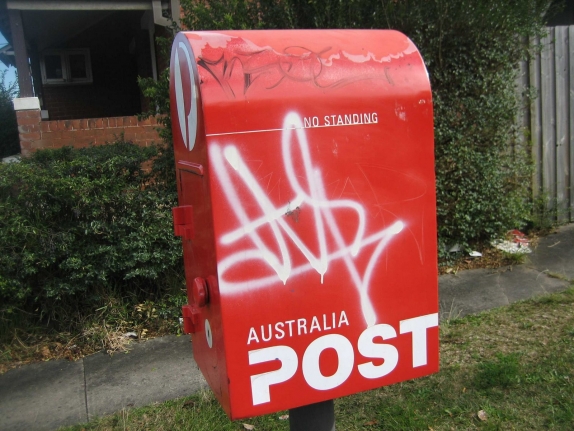
What's the future for AusPost in a digitised world?
Tracey shared real examples of the often simple ways ordinary people in their business have made changes that have worked. They show us what can actually be achieved when the starting point is very grim. Which gives real hope for small and medium sized businesses that aren't as tied down by the inertia of a monopoly like AusPost.
Tracey painted a picture of a vast post office workforce laboring under the emotional burden of the fear of change. Imagine you were a postie, one of my schoolmates from 30 years ago still is. Imagine over the last decade the postie doing the daily rounds would feel the bag of mail on their back was lighter than the week before. And next week it will be lighter still as people stop posting letters. They'd be worrying when will the day come there is no mail to deliver and they're out of a job?
To survive Australia Post has to manage a bigger change to the way customers exchange information than past revolutions like telegraph to telephone, horse borne deliveries to airmail, phone to fax. The Internet has changed everything more significantly than any of those innovations. Manage the change they have.
To quote the Australia Post annual report: “For the 13th consecutive year, we met or exceeded all of the performance standards that relate to our community service obligations. We delivered 95.5 per cent of domestic letters on time or early (against our 94 per cent target) and we increased the number of postal outlets to 4,429 nationwide. Total revenue grew to $5.9 billion and our after-tax profit increased by 10.9 per cent to $311.9 million. This means net profit has grown 21 per cent per annum since we enacted our Future Ready transformation program."
What has AusPost changed to keep up? Nearly everything, they had to. Last year they lost $189 million on mail delivery. AusPost now makes more from servicing e-commerce businesses and other activities that didn’t exist just a decade ago. There are secure 24/7 Parcel Lockers within minutes drive of most homes for out of hours parcel deliveries, digital self serve kiosks in post shops and soon digital I.D. recognition software that will mean documents like banking applications and contracts won’t need signatures by hand.
If a bureaucracy can go digital, so can your business
These changes to a huge and diverse business are making sure it can remain competitive as digitisation changes the world. As with most things in business, change management is being enabled at Auspost from the top. CEO Ahmed Fahour is a case study in the new style of management required for the digital age – leadership by openness, not power. This infographic sums it up nicely.
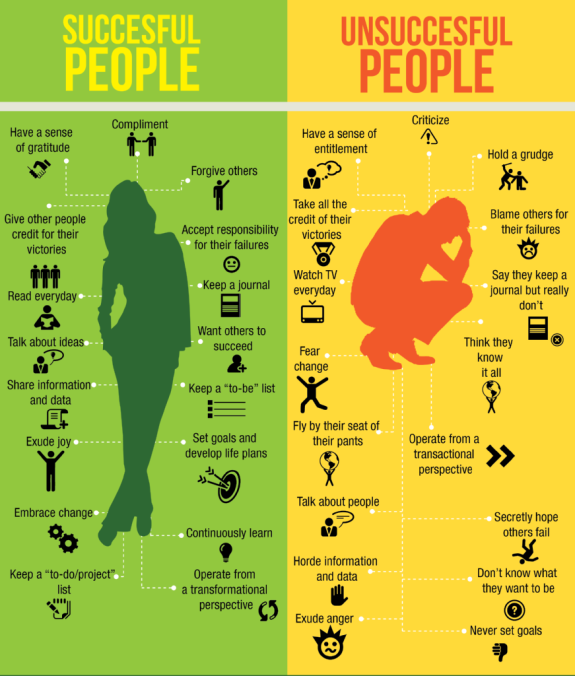
View this image on Pinterest.
Here are some examples of how Ahmed Fahour has let go of control:
1. Let staff fail
Individuals in offices can change their methods behind the counter to see if it works better than current processes without asking prior permission from senior management. If it doesn’t work, no great loss. If it does make an improvement, it’s shared across the organisation.
2. Social media is for everyone
While most government departments still don’t allow social media or even Google to be used in the office, Fahour has let employees at every level of share an opinion on Facebook. Just a few years before only 2 people were officially given the role to manage social media, yet even then there were 15,000 conversations happening on social media each year amongst staff.
Businesses need to recognise they can’t control what staff want, or constantly roadblock how they want to do it. Indeed today, in the words of former Cisco Senior Director Martin Stewart-Weeks, "a network routes around an obstacle." It's the same with staff, they will go around you, or leave.
3. What does the customer want that they’re not getting?
To improve the way they can fulfill for e-commerce customers, staff who had never shopped online were encouraged to do so in work hours. This led to an understanding at many levels of post employee of what online businesses do well and not so well, and discover what shoppers want from the whole order to delivery process. One consequent innovation is the 24/7 Parcel Locker, which means you don’t have to be at home to receive a valuable e-purchase.
4. What can you do that’s new?
Things are changing fast, so what you’ve always sold in the past is less likely to be as attractive to new customers tomorrow. Again, take inspiration from the top postie:
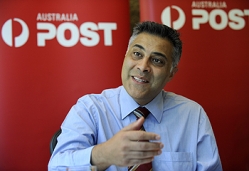 “We capitalised on the boom in online shopping with the Parcel & Express Services segment earning profit of $354.8 million, on the back of 9.3 per cent growth in domestic parcel volumes. And, despite difficult retailing conditions, Retail Services profit again grew to $200.6 million, mainly through adding new financial and identity services.”
“We capitalised on the boom in online shopping with the Parcel & Express Services segment earning profit of $354.8 million, on the back of 9.3 per cent growth in domestic parcel volumes. And, despite difficult retailing conditions, Retail Services profit again grew to $200.6 million, mainly through adding new financial and identity services.”
“Initiatives are all focused on capturing our immediate customer growth opportunities in the digital economy – especially in e-commerce, digital communications and trusted services.”
We are constantly exploring the new possibilities with our clients, it's how we help to keep them growing as successful challenger brands.
Read More
 Making meaningful comparisons as a consumer is challenging, especially with superannuation. Christopher Zinn says we need to understand how to make informed choices when incumbent businesses operate in a "confuscopoly".
Making meaningful comparisons as a consumer is challenging, especially with superannuation. Christopher Zinn says we need to understand how to make informed choices when incumbent businesses operate in a "confuscopoly".
It is a big ‘what if’ because too many businesses profit from the lack of determination of their customers for better products, services and even prices.The public’s desire for improvement is dulled by a widespread disengagement, resignation and inertia that anything they do may actually be much better for them.
And the consumer malaise seems worse in those markets which really count most because of the sums involved: superannuation, health and other insurances, energy such as electricity and telecommunications.
The symptoms are a lack of switching to better offers, which tends to benefit the incumbent above the challenger brand, and even paying over the odds by sticking with the wrong plan and perhaps the wrong provider.
The figures are sobering. The Australian Communications and Media Authority says poor plan choice around telecoms has cost consumers a probably under-estimated $1.5 billion a year.
Superannuation is confusing for customers
The ATO holds more than $18 billion in lost superannuation accounts. And despite more than 11 million Australians are covered by private health insurance less than 40,000 of them switch each year.
The fault is not solely the consumers. The ‘confusopoly’ of the mobile phone market in particular makes meaningful comparisons more than challenging.
Our cognitive biases, which make us particularly vulnerable to decisions around money and cause us to favour the present as opposed to the future, do not serve us well when it comes to assessing strategies around retirement savings.
And the complex and changing rules around health cover and premium rebates tend to drive policy-holders to sit pretty instead of seeking better value.
Of course some consumers are determined and realise a little time and effort in acquiring knowledge of these markets can save significant pain and expense.
But there’s a limit to even their patience and how much effort is worth it for how little a reward. There’s also the issue of expertise and the imbalance of information: as consumers we are amateurs buying from professionals.
We may only purchase a new car every few years, but the sales staff sell them every day, and however canny you are they will always know more about the vehicle, its true value and how to upsell you on various unnecessary warranties.
One way to correct this asymmetry, as it’s sometimes called, is to gather like-minded consumers together and use their numbers as leverage in negotiating better terms.
It’s already happening in specific markets such as energy and insurance as One Big Switch, with whom I used to be director of campaigns, has demonstrated here and overseas.
Another way is selectively reforming markets by regulation. In Australia conflicts of interest with financial planners led to the Future of Financial Advice (FoFA) legislation.
The government is seeking to severely dilute these much needed consumer protections, claiming they are somehow excess ‘red-tape’. In fact they represent a much-needed shark-proof cage for consumers to more safely navigate financial waters.
In the US and UK regulation is helping liberate consumers’ usage data from the back offices of utilities and banks so citizens can employ trusted third parties to crunch the numbers and help them make better decisions.
The determined consumer can take back control
Being determined as a consumer is not just a state of mind, although that helps. In the future it will require the technologies which can bring us together quickly and cheaply to use some people power in markets.
It will also require more consumers to get hold of their own data and then find emerging intermediaries to help them make real sense of the complexity and choice fatigue which bedevils too many markets.
Determined consumers do not need to be told to shop around or read the fine print. They already know that, but they do need help in turning their determination into better decisions.
Christopher Zinn is an independent consumer advocate currently running a campaign to highlight the financial advice protections (www.saveourfofa.com.au). His other initiative is www.determinedconsumer.com.au which is aimed at motivating consumer action. UNO worked with Chris on consumer empowering programmes at CHOICE. He also co-founded One Big Switch as well as being a repoorter/producer at the ABC, Channel Nine and several newspapers.
Read More
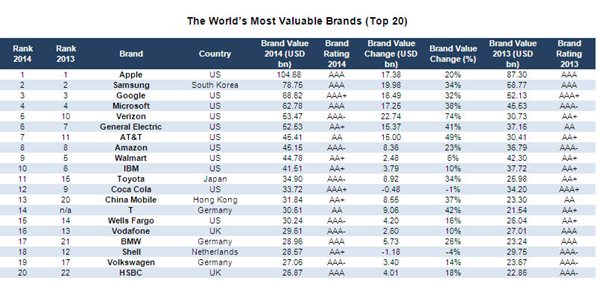

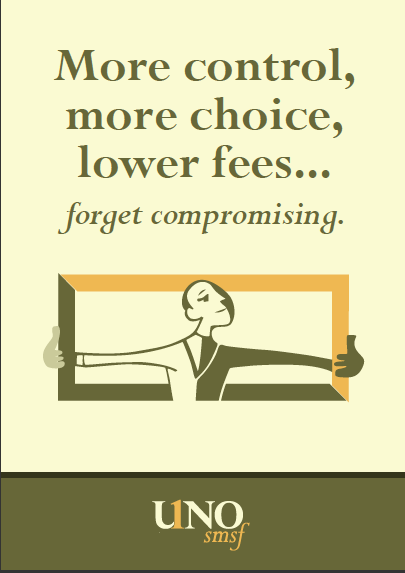



Scan the QR code for our contact details.
Download the Neoreader app.
© COPYRIGHT 2013 UNO marcomms Privacy